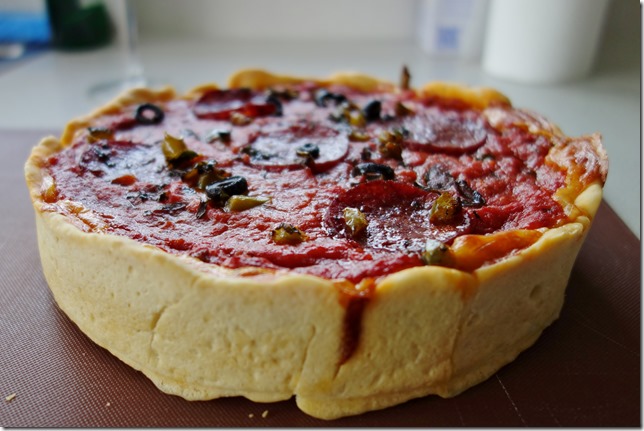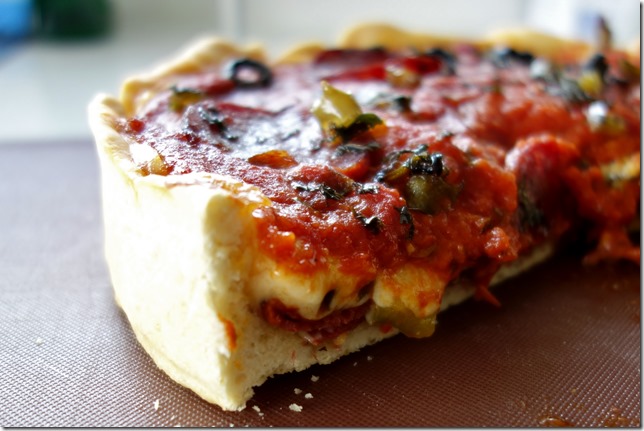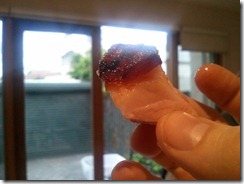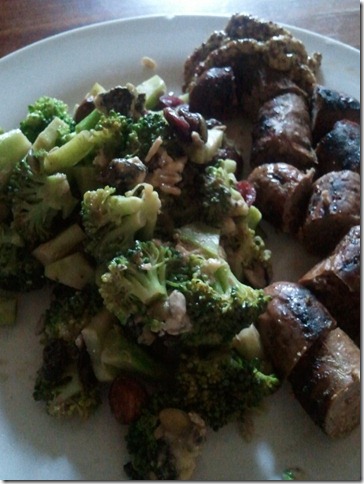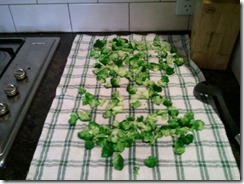I recently met a very sweet older Israeli woman living here in Melbourne named Ruth; I noticed in her kitchen a jar of what looked like olives. I asked her what was going on: they were in fact olives and she was curing them. Growing up in the Midwestern United States where nary an olive tree may be found, I did a double take and insisted that she elaborate. What I learned set me off on what is now the start of a multi-month journey of curing my own olives.

Ruth’s Olives
Today I got my hair cut by an older Greek man named Peter—armed with what Ruth taught me, I asked him if he cured his own olives. “Of course,” he told me, “I have an olive tree in my yard and I cure them all to last me for the year. They’re in season now, you know.” I did know, thanks to Ruth.
And of course he cured his own olives. Where have I been!
Here I was suddenly confronted with the fact that it wasn’t just Ruth, but generations of families that have been curing olives and passing on their methods by oral tradition. Again I insisted that Peter elaborate on the method—now that I lived somewhere with olive trees, I wanted to give this a try. Of course, a week ago, I had no idea that there were olive trees here, let alone that you had to do “stuff” to an olive to make it edible!
Raw olives off the tree are so bitter as to be impossible to eat—the only thing I can compare it to is a crabapple, except much, much worse. From my research I’ve found that there are three general ways to cure olives: in fresh water, in brine, and in a lye solution. They all serve the purpose of drawing out the bitter compounds (oleuropein) and preserving the olives so that they can be stored for a year or so without refrigeration.
Ruth and Peter’s methods were very similar: slice into each olive against the pit (to speed the drawing out of bitterness), cure in fresh water for 5 days to a week, changing the water daily. At that point switch to a brine (Ruth said 1T per cup of water; Peter said to put an egg in water—it will sink—and add salt until it floats with “the size of a 20¢ piece” above water). Let it sit for a month and taste one; they’ll be ready in another month. Ruth added peppers, onion, lemon juice and garlic to her brine. Peter suggested adding vinegar, and then pulling out small batches and marinating individually.
I read a number of recipes online and decided on two batches: one following the freshwater+brine guidelines of Ruth and Peter, a second following a lye-cure. My family grew up with Graber Olives as a special treat for big family/holiday dinners (owing to my grandpa growing up in the same city as Graber). From what I’ve read lye cured olives will have a buttery texture that seems to describe Graber’s nearly perfectly.
Last week I bought supplies but couldn’t find olives (it was a Sunday and the markets are slow on Sundays); today (Saturday) I found olives without issue at South Melbourne Market and at a fine price of $2.99/kg…I came home with 2.5kg (about 5.5lbs).

My first water+brine olives, with the to-be-lye cured waiting in the bag beside.
Two batches are now in jars. At the end of this week I should have an indication of whether or not the lye worked and if I’m going to be buying another jar and more olives next Saturday. Stay tuned!
